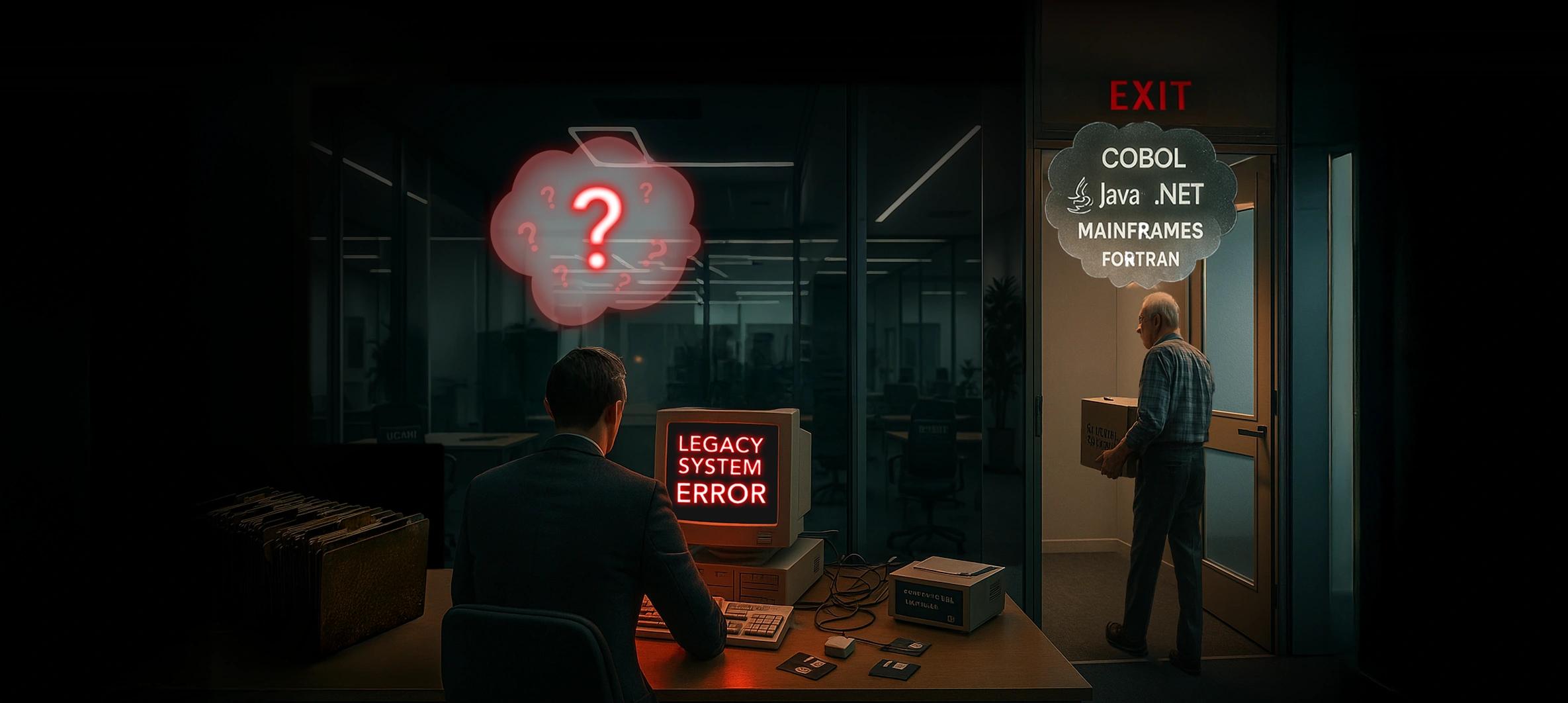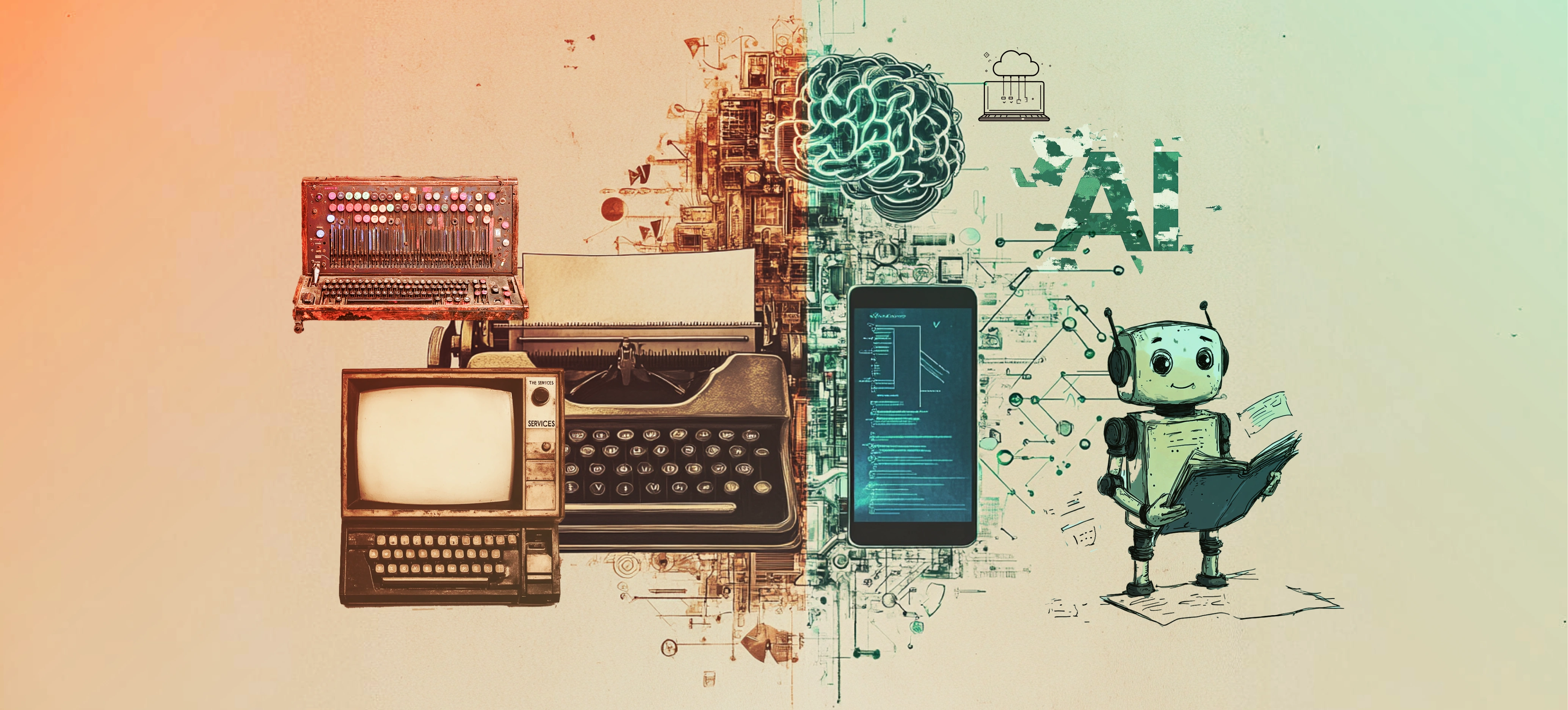This Silent Crisis Is Turning Legacy Systems into a Ticking Time Bomb
What happens when your core systems crash—and no one’s left who knows how to bring them back?
Your Legacy Systems Are a Ticking Time Bomb
Your legacy tech isn’t outdated—it’s one resignation away from collapse.
👉 Book your consultation before the next failure hits.
On July 19, 2024, a routine CrowdStrike Falcon Sensor update triggered the largest global IT outage in history, paralyzing airports, hospitals and banks. Within hours, over $10 billion was lost.
But the real failure was not the software—it was the workforce.
As systems crashed, organizations searched for help, only to realize their legacy experts were gone. The engineers who once handled mainframes, Java monoliths and early .NET had quietly retired or moved on.
What followed was not just a system crash. It was a workforce collapse—years in the making.
And it's not a one-off incident.
Gartner predicts that by 2025, 60% of modernization efforts will be delayed due to a lack of legacy skills. 70% will stall not because of outdated tech but because no one’s left who understands it.
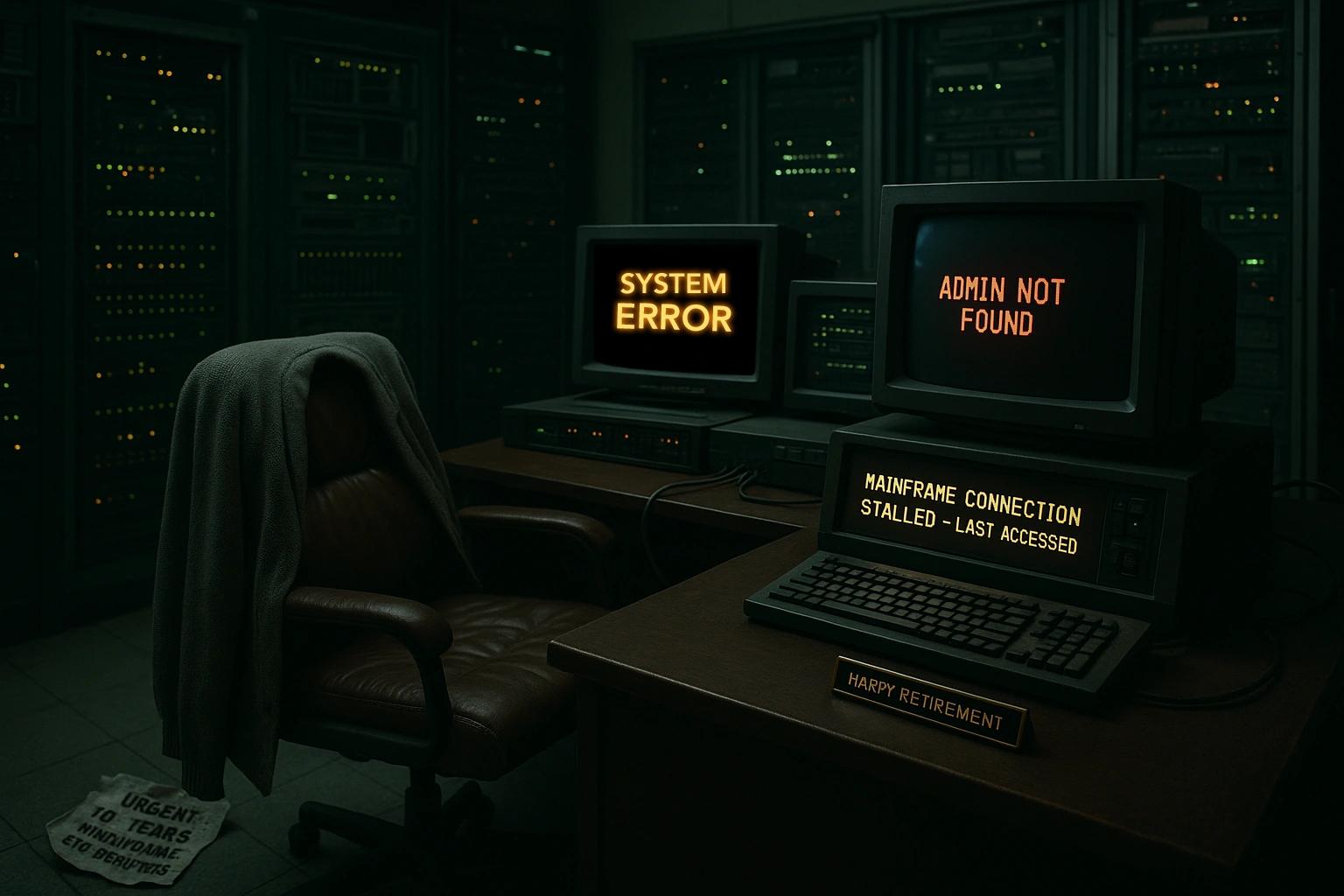
The Hidden Workforce Threat Stalling Enterprise Growth
We often reduce technical debt to outdated code or postponed refactoring. In reality, it is much broader. It includes rushed architectural choices, lack of documentation, minimal test coverage, fragmented tooling and quick fixes that bypass long-term thinking. It is the consequence of prioritizing speed over stability. Over time, this debt slows down development, increases risk and makes onboarding or innovation significantly harder.
But there is a deeper, less visible threat compounding behind the scenes: talent debt.
When skill development lags behind platform complexity or tooling advancements, capability gaps emerge. These gaps hinder delivery velocity, introduce operational bottlenecks and increase dependency on a narrow set of individuals.
Much like technical debt, talent debt accumulates quietly and eventually degrades system resilience, maintainability and organizational agility.
Today, over 70% of Fortune 500 companies still rely on legacy systems for their core operations—mainframes, custom-built ERPs, and vertical data warehouses. These systems are mission-critical. Yet the people who built and maintained them? Most are gone.
According to Forrester:
- Over 50% of legacy engineers have exited the workforce
- Fewer than 20% of new hires have legacy system experience
As enterprises push modernization, it’s not outdated tech slowing them down but missing expertise.
It’s Not a Hiring Problem. It’s a Market Collapse.
If you are still posting roles asking for “10+ years of mainframe experience,” ask yourself: who’s even left to apply?
Traditional recruiting won’t fix a gap that’s no longer fillable.
Meanwhile, systems remain deeply locked into:
- Tightly coupled, non-containerizable monoliths
- Built with deprecated encryption (MD5, SHA-1) and hardcoded credentials
- Poorly documented with fragmented, non-compliant audit trails
These are not just old systems, they are modernization dead-ends without a strategic pivot.
So, how are companies responding to this silent crisis?
To stay functional, enterprises are: rehiring retired developers or paying $100–$500 per hour to freelance legacy consultants (for platforms like IBM iSeries, Oracle 10g, and .NET monoliths)
These systems are becoming digital orphans—still operational, but with no one left to support them.
Modernizing with traditional methods won’t cut it anymore. Enterprises must adopt AI-powered modernization that convert technical and talent debt into scalable cloud-native infrastructure.
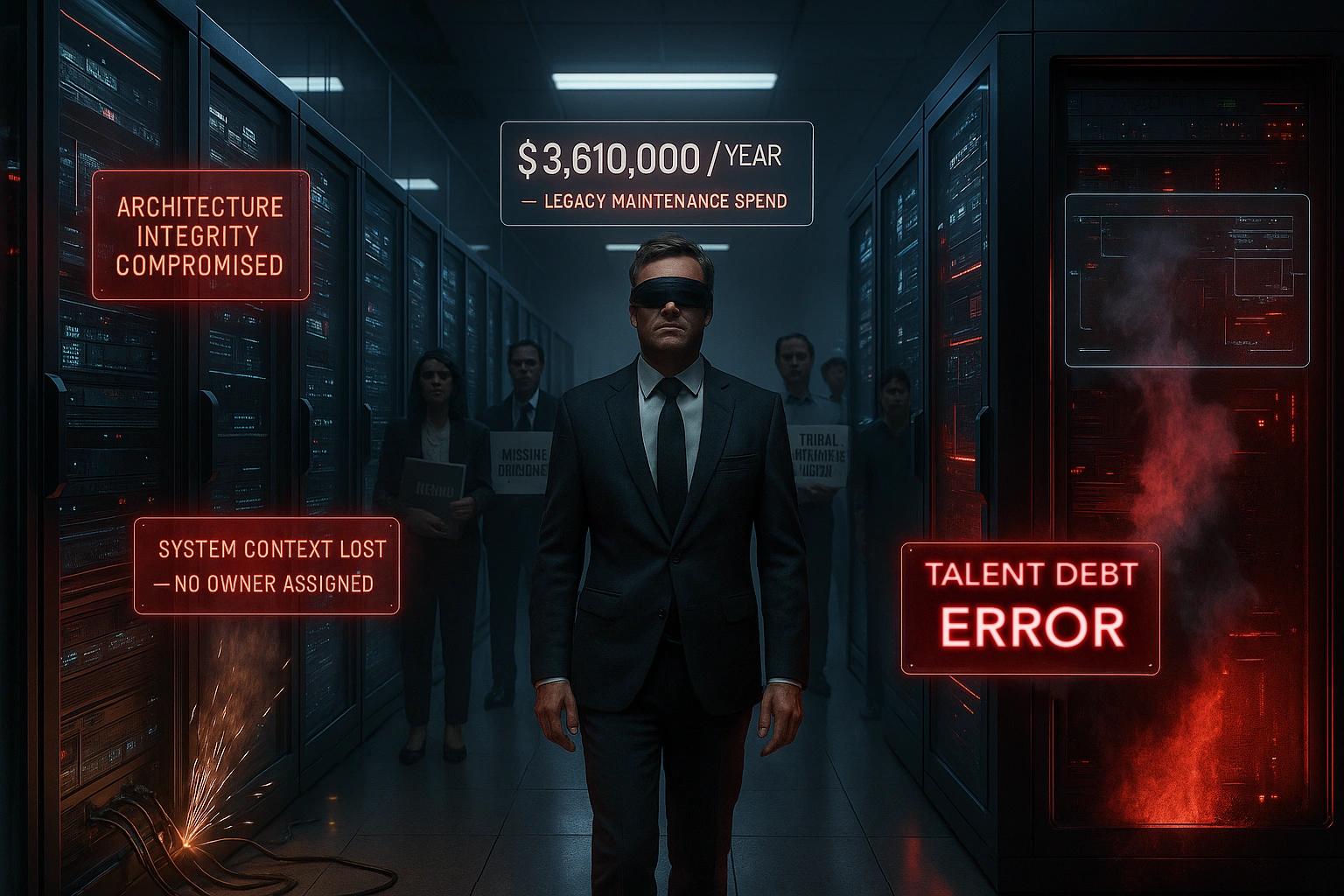
The Double Threat Lurking in Your Legacy Tech That Leads to Enterprise Failure
Your legacy system isn’t just outdated—it’s a silent business liability, compounding in two dangerous ways:
- Aging, brittle architecture
- Loss of system-level operational context
One breaks your systems. The other breaks your ability to understand them.
When both converge, you are not just bleeding costs—you are walking blindfolded into digital failure.
Capgemini reports enterprises spend $3.61 million annually just to keep legacy systems alive—not modernize them.
Here is how technical debt compounds when human expertise disappears:
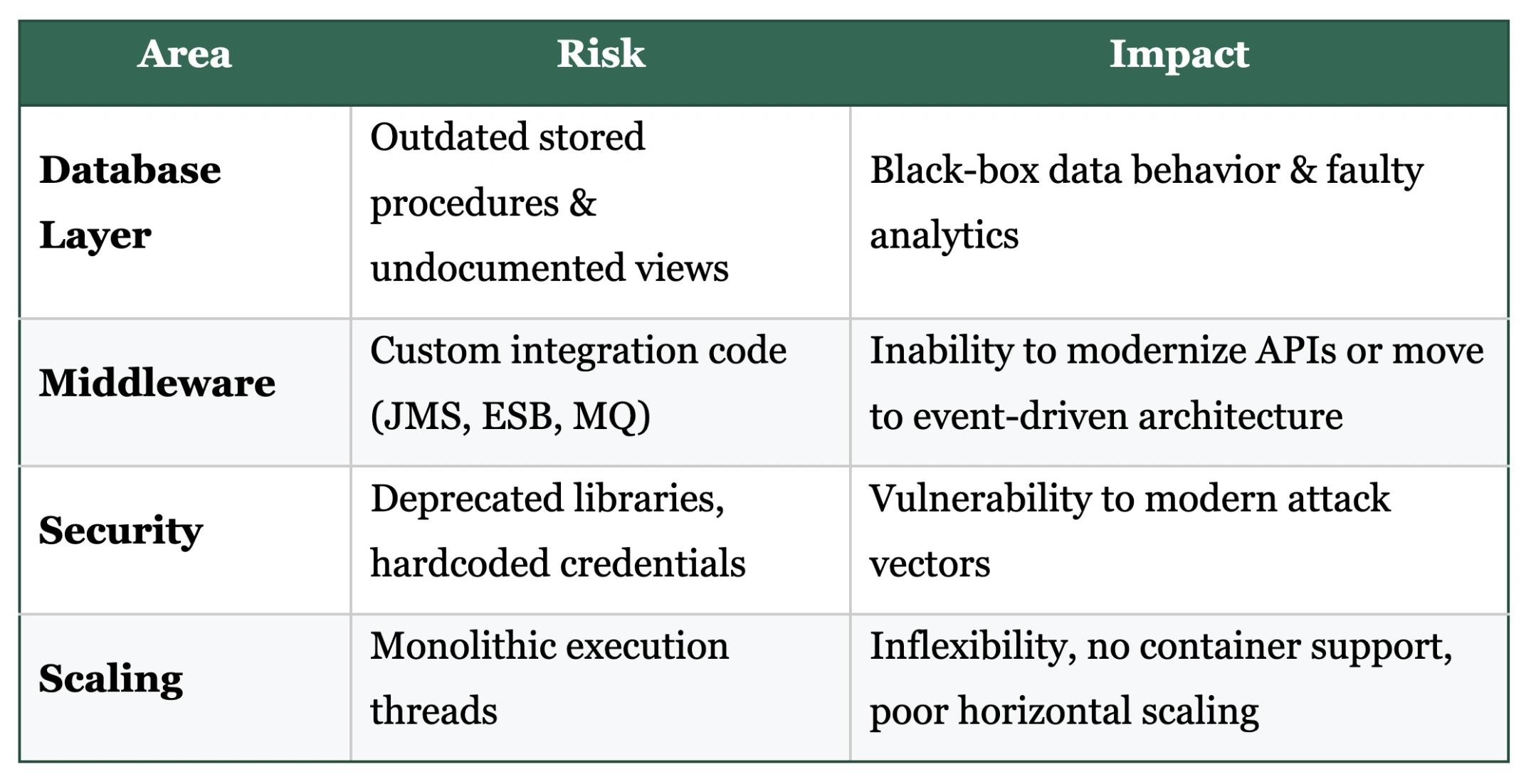
The Modernization Imperative - From Survival to Strategic Advantage
Hiring legacy devs today is like searching for VHS repair technicians in the era of streaming—it is outdated, inefficient and unsustainable
The real solution is no more workforce replacement but strategic, enterprise-grade AI transformation that preserves critical business functionality while reducing dependency on specialized legacy skills.
Cloud-Native Architecture Migration→
Migrate from mainframe monoliths to microservices, enabling scalable systems managed by modern developers who understand APIs, containers, and DevOps.
Component-Based Code Modernization→
Rather than wrapping legacy logic in APIs, AppMod.AI fully migrates applications into modern frameworks by reengineering them component by component. This structured approach eliminates technical debt, enables parallel development and ensures the end-state is future-proof. The result? Up to 3x faster development and higher productivity.
Low-Code/No-Code Integration:→
Modern tools allow business users to create workflows and integrations without deep technical knowledge of legacy systems democratizing access and reducing IT bottlenecks.
AI-Assisted Code Translation→
Instead of wasting months onboarding engineers to untangle legacy code, AI-assisted platforms like Codebase Insights transform raw code into structured intelligence—mapping dependencies, generating architecture diagrams, uncovering security risks and delivering executive-level summaries in days, not months.
Your Legacy Systems Are a Ticking Time Bomb
Your legacy tech isn’t outdated—it’s one resignation away from collapse.
👉 Book your consultation before the next failure hits.
Move from Fragile to Fault-Tolerant — Before Legacy Becomes Liability
Will your business still understand how its systems actually work?
Legacy systems are not just old, they are becoming unreadable, unmaintainable and soon, unrecoverable. But here is the truth most teams ignore:
Modernization does not mean rewriting from scratch. It means strategically layering scalable, AI-driven architecture that helps your existing workforce understand, manage and evolve complex systems.
Don't let your next resignation cripple your business. Turn knowledge-dependent systems into self-sustaining, API-ready infrastructure before it's too late. Join 500+ Enterprises Who Chose Evolution Over Extinction
